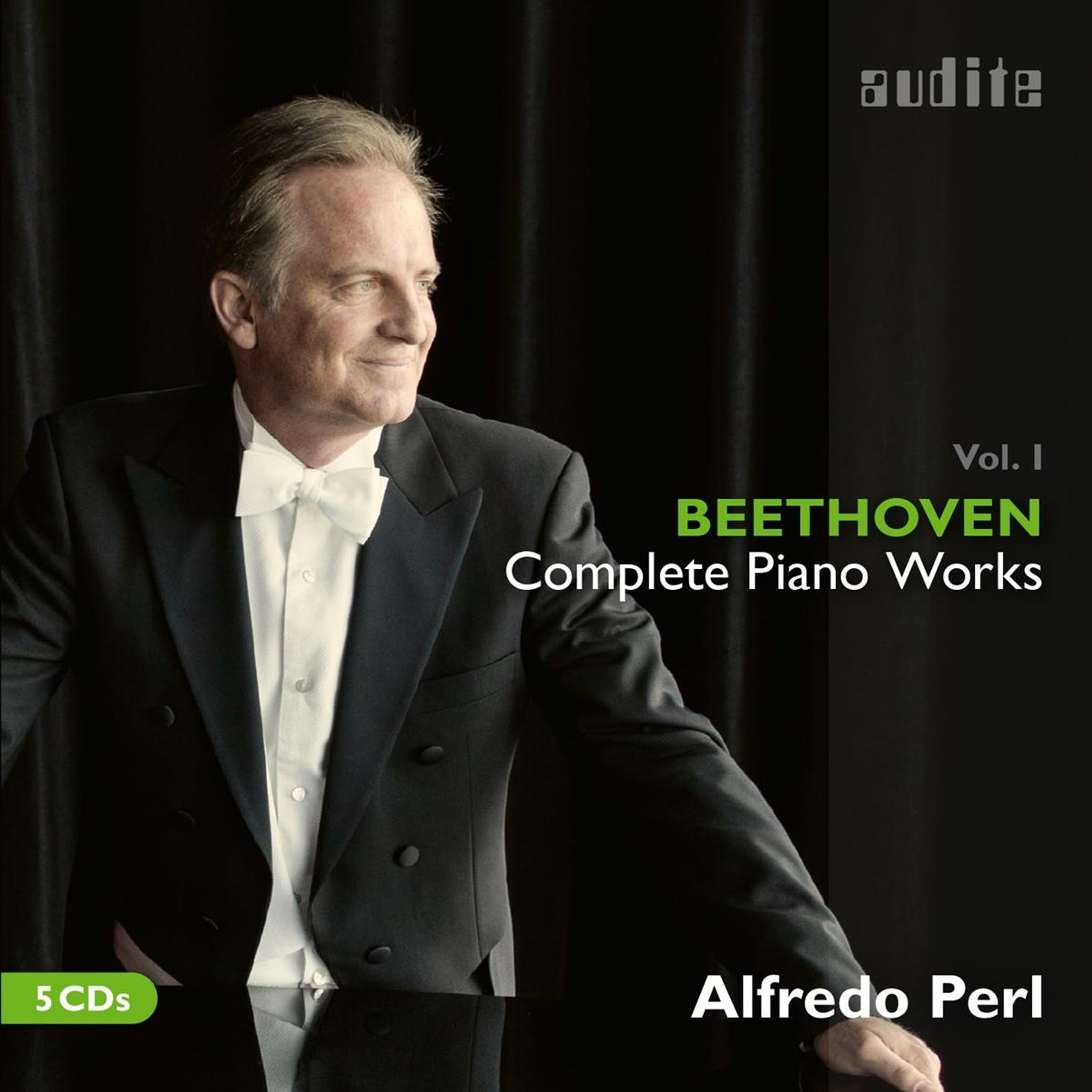Alfredo Perl beginnt seinen Zyklus mit den Beethoven-Klavierwerken hochkarätig. In diesem Vol. 1 (1791-1800) sind die ersten 11 Sonaten sowie etliche Variationswerke zu hören. Was auf dieser Einspielung fasziniert, ist der sehr persönliche Zugang Perls, der aber in jedem Moment sehr authentisch ist und keine Selbstinszenierung ist. Kein Zweifel, hier haben wir es mit einem erstklassigen und dazu sehr ernsthaften Interpreten zu tun, der diesen frühen Sonaten durchaus ihren Reiz abgewinnen kann.
Perl spielt die Werke mit Fug und Kraft und zögert nicht, Akzente zu setzen. Somit wird die Musik relativ scharf konturiert und das Relief stark herausgearbeitet. Diesen eher starren und z.T. massiven Eckpfeilern setzt der chilenische Pianist ein fließendes Spiel gegenüber, das in jedem Moment klar und beweglich ist, ohne je pathetisch zu wirken. Auch der melodiöse Gehalt wird relativiert, alles klingt klar und geordnet. Wenn man auch den interpretativen, romanischen Gestus eines Buchbinder (Salzburg) voller Kraft und Grandezza hier vergebens sucht, so hat Perls Interpretationsansatz durchaus seine Reize. Diese moderne, geradlinige Interpretation mag nicht jedermanns Sache sein, ich finde, sie ist ein Gewinn für diese frühen Sonaten und besonders auch für die Variationswerke, die hier ganz neue Dimensionen in Sachen Ausdruck und Struktur erreichen.
Vor allem ist es Alfredo Perl hoch anzurechnen, dass er alle 11 hier eingespielten Variationen sehr ernst nimmt und ihnen einen wirklichen Wert zugesteht. Zudem erklingen noch andere kleinere Werke, die ebenfalls sehr gut zeigen, wie Beethoven in diesen Jahren das Klavierspiel neu erfunden und somit revolutioniert hat.
Alfredo Perl begins his cycle of Beethoven’s piano works in high style. This Vol. 1 (1791-1800) contains the first 11 sonatas as well as a number of Variations sets. What is fascinating about this recording is Perl’s very personal approach, which is very authentic at every moment and is not a self-portrayal. There is no doubt that we are dealing with a first-class and very serious interpreter who is able to make these early sonatas very appealing.
Perl plays the works with fugue and power and does not hesitate to set accents. As a result, the music is relatively sharply contoured and the relief is strongly emphasized. The Chilean pianist contrasts these rather rigid and sometimes massive cornerstones with a fluid playing that is clear and agile at every moment, without ever seeming pathetic. The melodic content is also relativized, everything sounds clear and orderly. Even if one searches in vain for the Romanesque gesture of a Buchbinder (Salzburg) full of power and grandeur, Perl’s interpretive approach certainly has its charms. This modern, straightforward interpretation may not be everyone’s cup of tea, but I think it is an asset for these early sonatas, and especially for the variations, which reach completely new dimensions here in terms of expression and structure.
Above all, it is to Alfredo Perl’s credit that he takes all 11 variations recorded here very seriously and gives them real value. In addition, there are other smaller works that also show very well how Beethoven reinvented and thus revolutionized piano playing during these years.


















